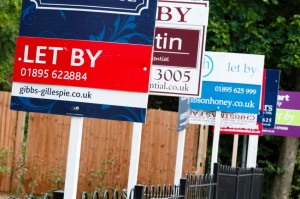IF volunteer Aleksandra Blawat highlights several key findings from the recently released English Housing Survey 2012-13 which demonstrate the plight of so-called “Generation Rent” 
Privately rented homes are poor value for money
There are three main housing tenures in England: owner-occupation (which includes those that own their own home and those with a mortgage), the social rented sector (subsidised rents from local authorities and housing associations) and the private rented sector.
The English Housing Survey found that private renting is more expensive than owner-occupation: in 2012-13, private renters paid an average of £163 per week for housing, while owner-occupying households paid £149 per week. Due to the fact that owner-occupiers tend to have higher incomes, tenants ended up spending 40% of their income on rent, while homeowners spent only 20%.
Rented homes are also of lower quality. Owner occupied homes were larger than privately rented ones (104m2 compared to 74m2), less likely to be overcrowded and less likely to fail to meet the decent homes standard (20% vs. 33%). Failing to meet this standard was usually due to failing to meet the minimum safety standard.
Cost and quality are two key reasons why people would prefer to own their own home rather than rent – but renting is something that many young people will have to endure for a very long time as they find themselves ‘rent trapped’.
The property market is spiralling out of control: house prices have risen three times faster than wages in the last decade. At the same time, the recession has hit the wages and employment prospects of young people hardest. This means that young people are unable to save for a mortgage as their income (if they are lucky enough to have a job) is eaten up by rent and necessities. A startling 39% of private renters and 77% of social renters have no expectation of ever buying a home.
Dominance of the private rental sector
The situation appears even worse when taking into account the fact that, for the first time, more people were renting privately (18%) than from social landlords (17%). Yet the private rental sector has a higher proportion of homes missing the minimum safety standard (19% compared to just 6% of social housing). This disproportionately affects young people: 51% of all private renters were under 35.
The growth of private renting also costs the state money: the proportion of private renters who received Housing Benefit to help pay their rent increased from 19% in 2008-09 to 25% in 2012-13. The English Housing Survey also pointed out that, because rents are higher in the private rented sector than in the social rented sector, Housing Benefit payments tend to be higher as well. The average private renter who receives Housing Benefit is currently paid £109 per week, compared with just £71 among people who rent from local authorities. It’s no surprise that as more and more people rent privately, the Housing Benefit bill will continue to expand; the Department for Work and Pensions estimates that it will cost £25 billion a year by 2017.
Inefficient under-occupation
The English Housing Survey also provided further evidence that our existing housing stock is allocated extremely inefficiently. Among owner-occupiers, 49% were assessed as “under-occupying” (meaning they had at least 2 more bedrooms than they need according to the Bedroom Standard) their homes compared with 15% of private renters and 10% of social renters. This represents an astonishingly inefficient distribution of rooms when you consider the continued existence of a housing shortage. It also ties back to intergenerational unfairness: owner-occupiers who are holding onto empty rooms are likely to be older. This contrasts with the young generation, which faces high rental costs, poorer living conditions, and decreased prospects of home-ownership.
A bright side: increased energy efficiency
There has been a steady increase in the proportion of homes with central heating (the most efficient method) since 1996, while the proportion with room heaters (the least efficient method) has decreased. Levels of all types of insulation have increased. This is welcome news as it means less energy is wasted, which benefits future generations.
In the end, the English Housing Survey sheds light on an important aspect of intergenerational unfairness: private tenants, who are increasingly made up of young people, pay so much for their housing that they are losing hope of ever becoming home-owners.
